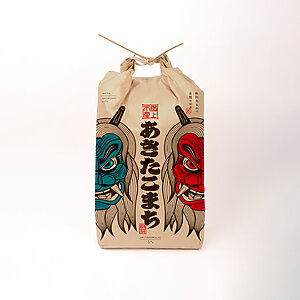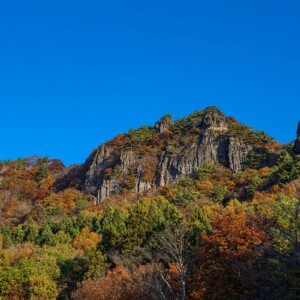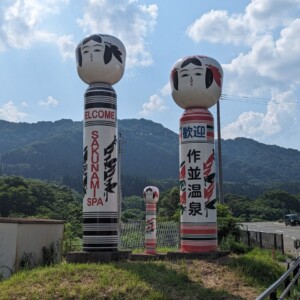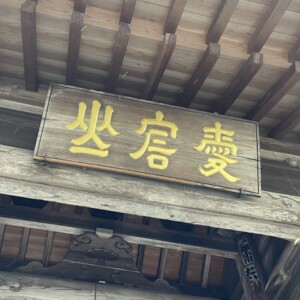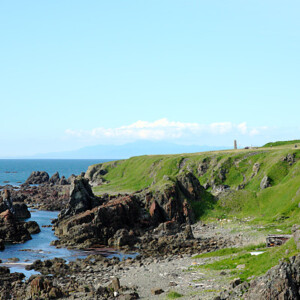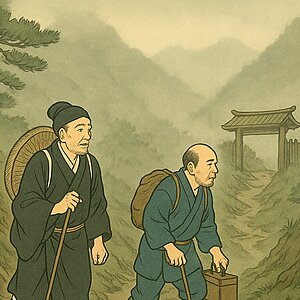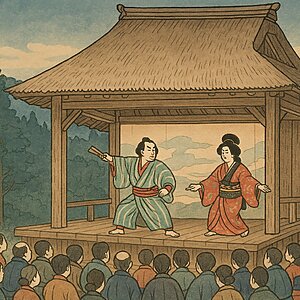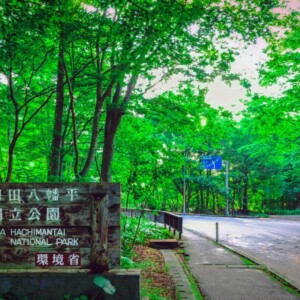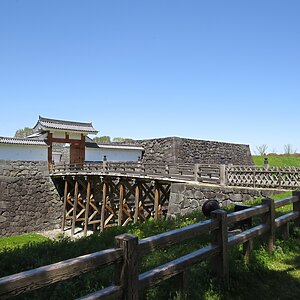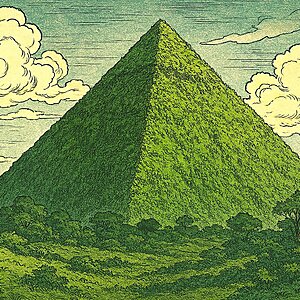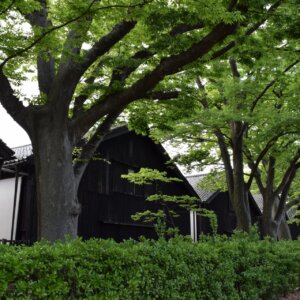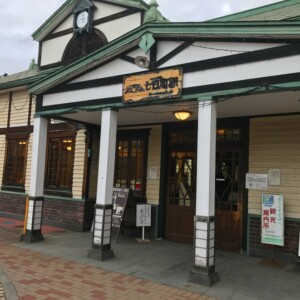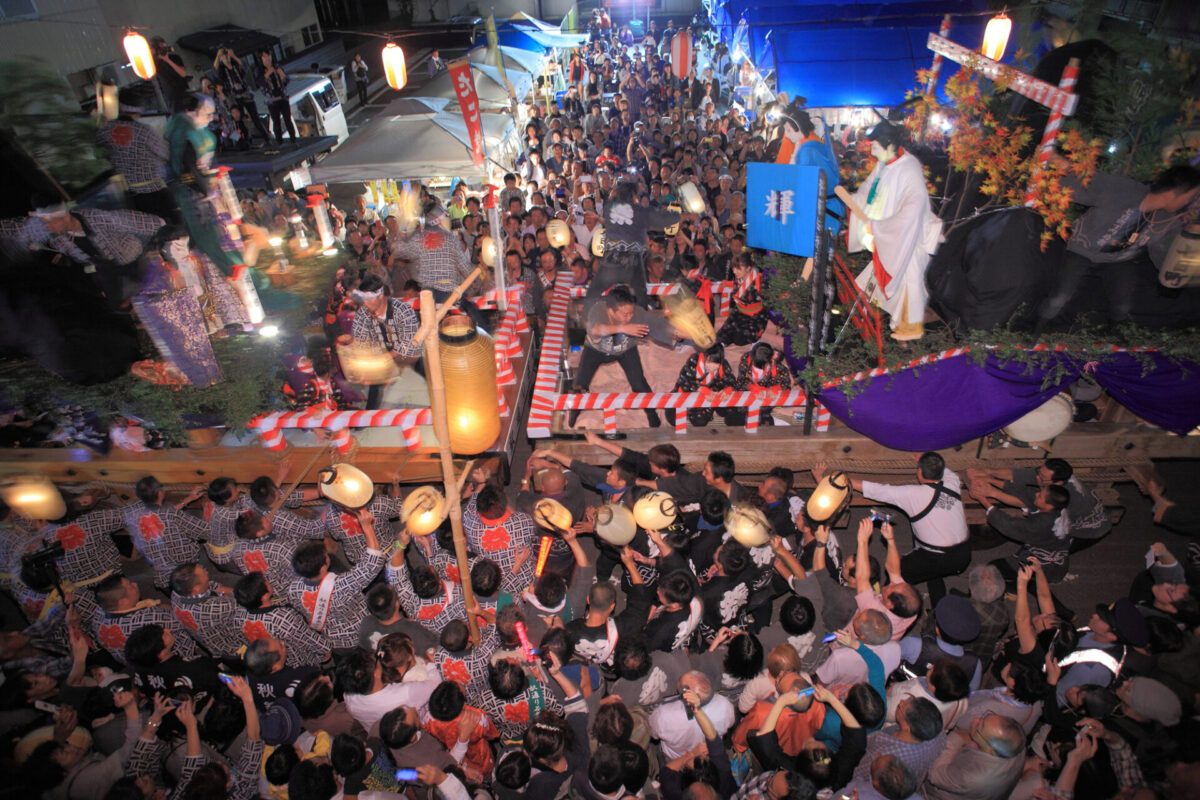
Kakunodate, a castle town where flowers were opened during the Satake Kita family era [Senboku City highlights 3]
table of contents
- 1 The Satake Kita family inherited the townscape built by the Ashina clan
- 2 Kakunodate's population was over 600 households and 3,000 people
- 3 Because it was a small castle town, it escaped the ravages of the Boshin War
- 4 The Kakunodate Festival's Yama Event has been designated as an Important Intangible Folk Cultural Property of Japan
- 5 The Kakunodate Festival has been running for over 330 years since at least 1694
- 6 Kakunodate Festival, which lasts for three days from September 7th
- 7 The biggest highlight of the mountain events is the spectacular "Yamabuttsuke"
- 8 The strange festival "Hifuri Kamakura" where the end of a rope is set on fire and swung around
- 9 Koshogatsu is the start of work
- 10 The origin of the Sagicho festival is the burning of decorations such as New Year's decorations and New Year's pine decorations
Kakunodate flourished during the 215 years or so of the Edo period, when it was ruled by the Satake Hokke clan, who were respected by the local residents as their "lord."
The Satake Kita family inherited the townscape built by the Ashina clan
The town layout that remains in Kakunodate today, centered around the castle town, was created by the Ashina clan, distant relatives of the Satake clan, lords of the Kubota domain, who first settled in Kakunodate during the Edo period. With Furushiroyama, where Kakunodate is located, at its peak, at its southern foot, in an area measuring approximately 300-500m east to west and 2,000m north to south, was a town known as Kakunodate Nijuichi-cho Samurai Residence Street ," was called Uchimachi, and the town names used the character cho such as Omotemachi Shimocho and Higashi Katsurakucho
Kakunodate's population was over 600 households and 3,000 people
It is said that there were around 250 samurai residences in Uchimachi when the Ashina clan built the town (around 1620). The Ashina clan later died out due to lack of a successor, and the Satake Kita clan moved into Kakunodate in 1656. Even after the Satake Kita clan took over, the size of the town did not change much, and the samurai population, including family members, is thought to have been around 1,200 to 1,500 people
In contrast to Uchimachi, where the samurai residences were located, the townspeople's town was called Tomachi, and according to the 1849 statistics of the Kubota domain ("Revised Survey of the Number of Male and Female Peasants in the Household and Domain in 1859," included in "New Edition of History of the Development of Northern Umi," held at the National Diet Library), there were 356 households, and the total population was probably around 1,500 to 2,000
Because it was a small castle town, it escaped the ravages of the Boshin War
the Akita Prefecture local history book " Shinpen Kitau Hattatsushi ," in 1849, the population of the entire Kubota domain was about 90,000 (excluding some areas) including samurai and townspeople, excluding farmers (about 280,000), so Kakunodate was a fairly small castle town. This is one of the major reasons why Kakunodate was not a battlefield during the Boshin War (1868-1869), when fierce battles were fought between the various domains of the Tohoku region, divided into the new government army and the old shogunate army, during the Meiji Restoration, and why the townscape from that time remains intact to this day.
The Kakunodate Festival's Yama Event has been designated as an Important Intangible Folk Cultural Property of Japan
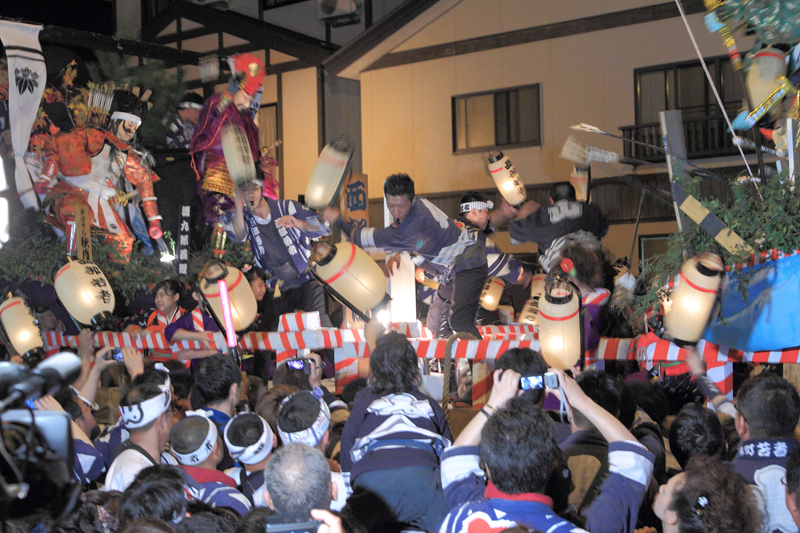
Kakunodate Festival Yama Event , which is a nationally designated Important Intangible Folk Cultural Property and registered as a UNESCO Intangible Cultural Heritage . It is 18 hikiyama floats collide on street , and while it can be rough, it also has an elegant side, with the festival floats showcasing their skill and hand dancing in front of the head of the Satake Kita family, the feudal lord, and competing to be the first float of the year.
The Kakunodate Festival has been running for over 330 years since at least 1694
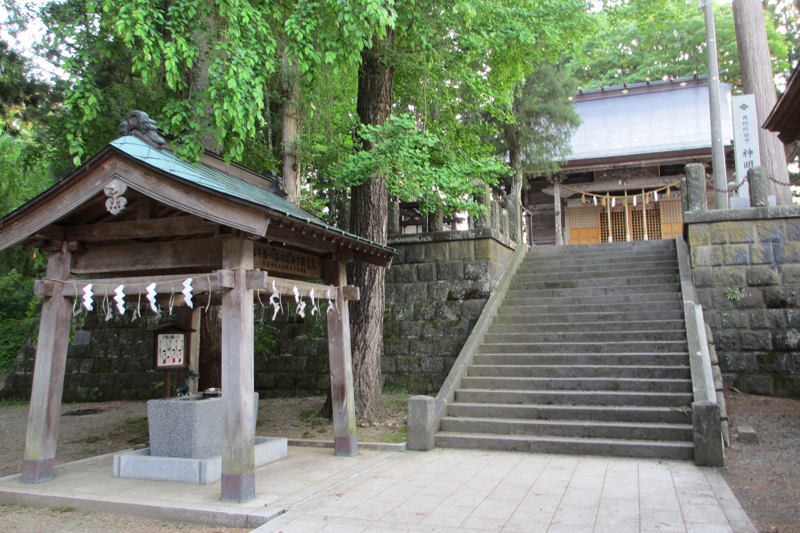
The Kakunodate Festival is held every year for three days from September 7th to 9th, combining the festivals of Kakunodate's guardian deity, Shinmei Shrine, and Jojuin Yakushido, which is said to have been built in the Muromachi period. Its origins are unclear, but the first recorded record of the festival is from 1694 in the Satake Kitake Diary, which is said to have been written daily by the lord of the Satake Kitake clan . It states , " The Kashima Festival (as it was then called) was held, and each ward prepared a 'boat'-shaped float with dolls on it and showed it to the Kitake clan, " and this is considered to be the prototype of the Kakunodate Festival.
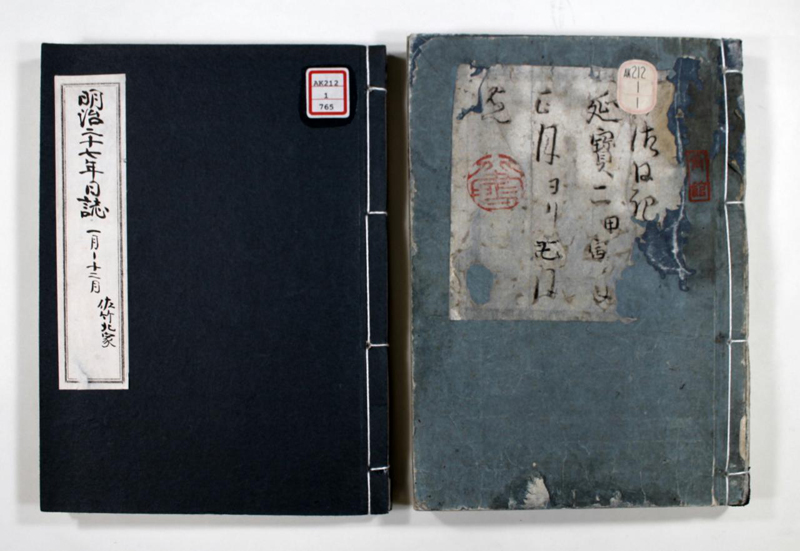
Furthermore, the 1788 edition of the "Satake Kitake Diary" makes its first appearance of the word "yama." It states, " At the Yakushido festival, about 40 yama were brought out and viewed by the emperor in front of the Kitake gate ," and by this time, "fune" (boat) had changed to "yama." However, it seems that the yama of that time were called "tsuriyayama" (hanging mountain) and were carried by many people.
It was not until the Meiji period that the floats became "hikiyama," which are floats attached to wheels and pulled by people, because they had grown too large to be carried by people. After 1910 (Meiji 43), all floats became hikiyama
Kakunodate Festival, which lasts for three days from September 7th
The floats are decorated with warrior dolls and other decorations, and are accompanied by musicians and dancers. The festival begins on the morning of September 7th with the annual ceremony at Shinmei Shrine. After that, around 4pm, all 18 floats gather at Shinmei Shrine, and each one performs an offering of music and dance, with the last float finishing at midnight
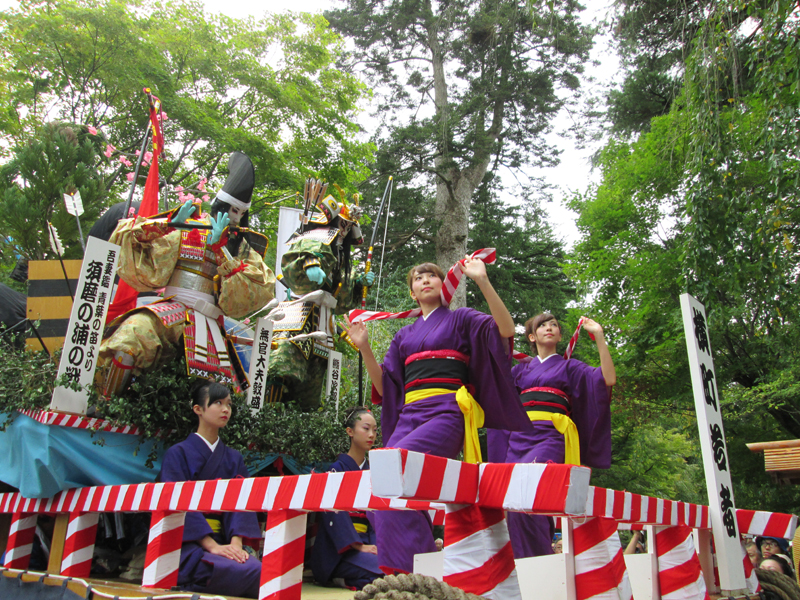
September 8th begins with a Shinmei Shrine ritual, followed by 18 floats making a visit to Yakushido Hall. The " Satake Kitake Viewing " begins around 10am. This is a tradition that has continued since the Edo period, and involves showing the lord of the Satake Kitake the quality of the decorations, music, and dance that year. The current "lord" in 2025 is Satake Norihisa (former governor of Akita Prefecture), the 21st head of the Satake Kitake family, and the viewing was held at the former Kuroda family home on Samurai Residence Street.
The biggest highlight of the mountain events is the spectacular "Yamabuttsuke"
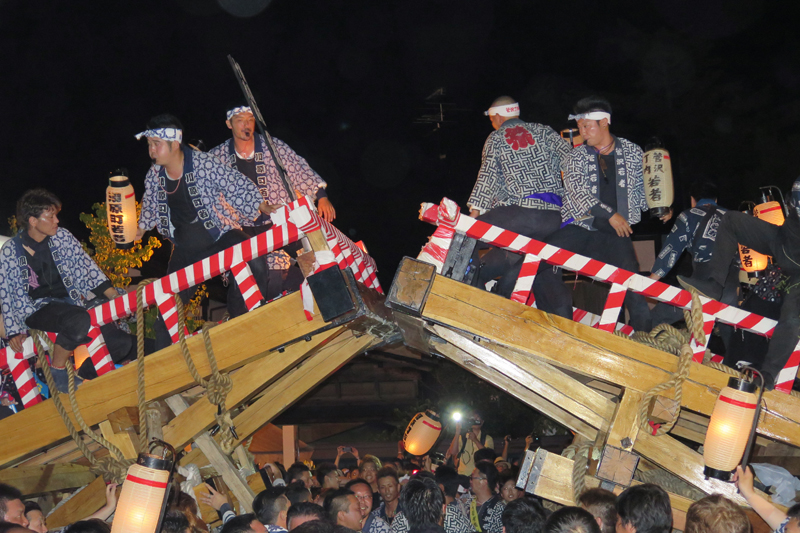
The biggest highlight of the Kakunodate Festival's Yama Events is the Yama Buttsuke , when two floats, each carrying musicians and dancers, collide with each other with all their might. When and where this happens is by chance, and the time and place are not set. It is said that it often happens late at night on the 9th, but recently, for tourists, a "Tourist Yama Buttsuke" has been held on September 8th, where the time and place are decided in advance. Even though it is for tourists, it is an incredibly powerful event, just like the real thing.
On September 9th, the Yama parades through the town, and in the evening, the real battle for control of the roads, "Yama Buttsuke," begins. Once "Yama Buttsuke" has finished, the festival comes to an end
Information on the Kakunodate Festival's Yama Events
- Event name: Kakunodate Festival Mountain Event
- Cultural Property Designation: Nationally Designated Important Intangible Folk Cultural Property / Registered as a UNESCO Intangible Cultural Heritage as one of the "Yama, Hoko, and Yatai" floats
- Contact: Semboku City Tourist Information Center “Kakunodate Ekimaegura”
- Phone number: 0187-54-2700
- Dates: September 7th to September 9th
- Location: Kakunodate Town, Uchimachi, Sotomachi, etc
- URL: Kakunodate Festival Yama Event
- access:
- Public Transportation: Approximately 20 minutes on foot from Akita Shinkansen, JR Tazawako Line, Akita Uchiriku Longitudinal Railway Kakunodate Station
- Car/Approximately 39 minutes from the Akita Expressway Kyowa IC via National Routes 341 and 46
Google Map
The strange festival "Hifuri Kamakura" where the end of a rope is set on fire and swung around

" Hifuri Kamakura " a traditional event that adds color to Kakunodate's winters . A straw charcoal bag is tied to the end of a straw rope about one meter long, then set on fire and swung around in a circle. The fantastical sight of rings of flame dancing against the snowy midwinter landscape is truly breathtaking.
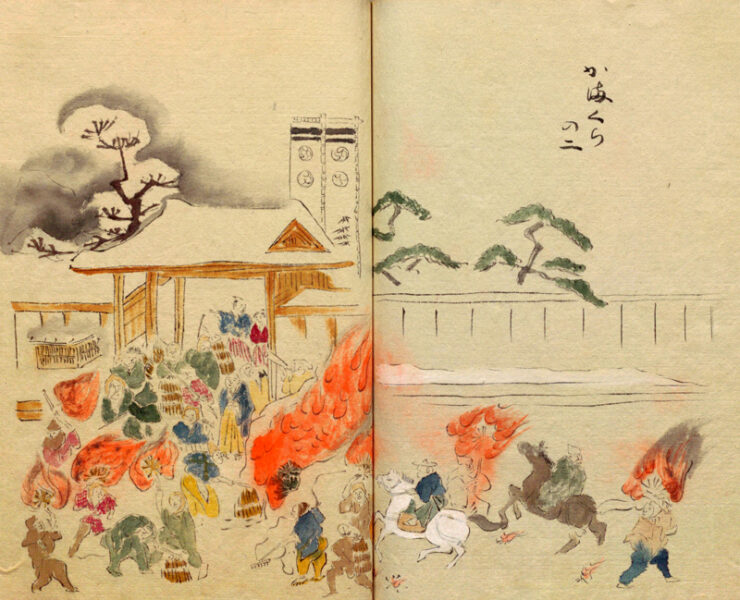
No solid evidence has been found regarding the origins of the "Hiburi Kamakura." In 1815 during the Edo period, the Edo Shogunate ordered all feudal domains across the country to complete the " Toijo ," a survey similar to what we would now call a questionnaire, which asked about local events and customs. One of Akita Prefecture's responses , the "Oshu Akita Fuzoku Toijo Kotae," depicts a large fire being lit in front of a samurai residence on January 14th during the Dosojin Festival, with men setting fire to rice bags and waving them around. It seems certain that the "Hiburi Kamakura" was an event held between January 13th and 15th, known as Koshogatsu (Little New Year) during the Edo period.
Koshogatsu is the start of work
Koshogatsu is the name for Oshogatsu, which falls on January 1st (through January 3rd), and events are often held to mark the end of the New Year. Nowadays, depending on the region, Koshogatsu refers to either Koshogatsu according to the old calendar (around February 15th) or January 15th according to the new calendar, and there is no set rule
The "Hifuri Kamakura" is held every year on February 14th, the first day of the new year according to the lunar calendar. The "Hifuri Kamakura" was originally called "Kamakura", but about 20 to 30 years ago it was renamed "Hifuri Kamakura" to distinguish it from the "Kamakura" event held in Yokote City, Akita Prefecture .
There are four events called "Kamakura" in Akita Prefecture: " Kamakura " in Yokote City, "Rokugo Kamakura" in Misato Town , Fire Festival Kamakura " in Kuzokuro, Kitaakita City , and " " in Kakunodate, Senboku City. They are all held during the lunar New Year (around February 15th) and share the common theme of praying for a good harvest and good health, but the events themselves are all different, and it's unclear why they're called "Kamakura," making them quite a mysterious event (we'll introduce them in detail another time).
The origin of the Sagicho festival is the burning of decorations such as New Year's decorations and New Year's pine decorations
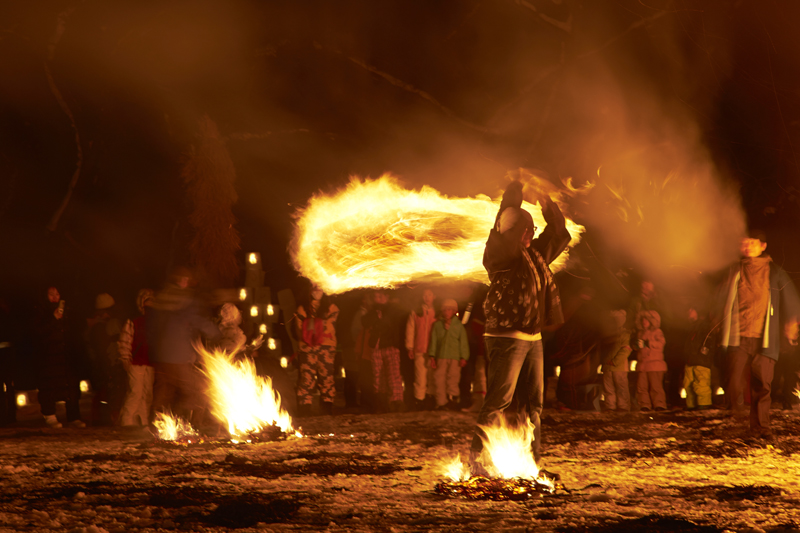
There is an event that is said to be the origin of the " Hifuri Kamakura Sagicho . It is said that worn-out balls from a game called "Gitcho" were burned along with folding fans and paper strips on January 15th, the first day of the Little New Year. This tradition was passed down to shrines and the general public, and developed into events called "Otakiage" (mainly at shrines), "Sagicho" (mainly in Western Japan), and "Dontoyaki" (mainly in Eastern Japan), in which New Year decorations, shimenawa (sacred ropes), kadomatsu (new year pine decorations), and other items are burned to pray for good health.
The "Hifuri Kamakura" festival is thought to have evolved from the Sagicho festival into its current style, and it is believed that the Satake Kita family's New Year's event spread among the people during the Edo period
The Fire-swinging Kamakura festival used to be held on the eve of February 13th, but in 2025 it will only be held on February 14th. The venue is also not fixed and changes slightly every year. Some venues allow tourists to try their hand at fire-swinging, but be sure to inquire with Semboku City or check their website for information on dates, venues, experiences, parking, etc
Hifuri Kamakura Information
- Event name: Hifuri Kamakura
- Cultural property designation: Semboku City designated intangible folk cultural property
- Contact: Semboku City Tourist Information Center “Kakunodate Ekimaegura”
- Phone number: 0187-54-2700
- Date: February 14th
- Event hours: 18:00-20:00
- Location: Various locations in Kakunodate Town (Main venue and around 20 other locations)
- URL: Hifuri Kamakura
- access:
- Public transportation: Akita Shinkansen, JR Tazawako Line, Akita Nairiku Jukan Railway, approximately 20-30 minutes on foot from Kakunodate Station
- By car: Approximately 40 minutes from Kyowa IC on the Akita Expressway via National Highways 341 and 46
Google Map
There are many more traditional events and crafts that began during the time of the Satake clan, such as paper balloons, Shiraiwa Sasara, and Shiraiwa pottery, which we will introduce in "Sights of Senboku Town ④."


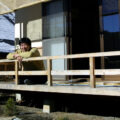
![Kakunodate, which was built by the Ashina clan in the Edo period, began with the Tozawa clan during the Sengoku period [2] Cherry blossoms on the Hinokiuchi River Dynasty Night Cherry blossoms_Akita Fan](https://jp.neft.asia/wp-content/uploads/2025/07/98886c5b97b9b3f8d61f0ae473e583b1-150x150.jpg)
![[Akita's Sasara Dance: Part 2] Is the Sasara Dance the beginning of a comforting Lord Satake, who is disappointed? Tsurugata_Noshiro City](https://jp.neft.asia/wp-content/uploads/2025/05/6931c5264258b88a3f542ff2ba1ae6a6-150x150.jpg)
